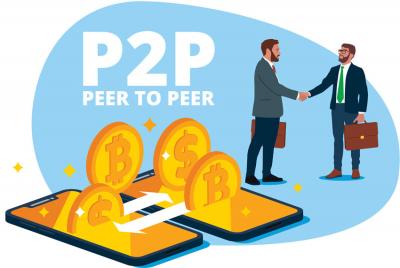The Green Sheet Online Edition
March 3, 2025 • 25:03:01
The double-edged sword of P2P payments

Apps like PayPal, Venmo and other P2P payment platforms have fundamentally transformed how we send money. What was once the domain of banks and financial institutions has been replaced with seamless, direct transactions that are fast becoming the norm. Peer-to-peer (P2P) payments have simplified the way individuals transfer funds, offering unparalleled convenience.
But beneath the surface, are there risks those businesses—and consumers—need to address?
Understanding P2P payments
At its core, the P2P payments model enables individuals to transfer money directly to one another via a digital platform. These platforms are designed to be secure, instant and easy to use, bypassing the need for traditional banking intermediaries. Whether sending money to a friend or splitting a dinner bill, users can rely on their smartphone or computer to complete the transaction in moments.
While platforms like PayPal and Venmo dominate in Western markets, similar technologies are flourishing in regions around the globe to cater to differing needs. Emerging markets, in particular, have seen significant growth in P2P payments, offering financial access to individuals who often lack traditional banking options.
These platforms have become a lifeline for unbanked or underbanked populations, opening up new opportunities for financial inclusion.
The appeal of P2P payments can’t be denied. Instant, borderless and often low-cost, these systems simplify personal transactions in ways that were unimaginable a decade ago. However, the convenience that makes them so popular also comes with potential drawbacks to keep in mind.
The risks behind the convenience
The simplicity of P2P payments belies a range of security vulnerabilities. Fraud and cybercrime are growing concerns, with many users unaware of the risks associated with these platforms. A recent survey by LendingTree revealed that nearly half of consumers (48 percent) are unfamiliar with the dangers of P2P fraud—a worrying statistic given how widespread these services have become.
One of the most common threats is phishing. Fraudsters frequently impersonate legitimate services or individuals, tricking users into revealing sensitive information or transferring funds to fraudulent accounts. These scams can be highly convincing, with fake notifications that closely mimic official communications from the payment provider.
Even without malicious intent, accidental transfers can create significant issues. A small typo or misstep can result in money being sent to the wrong recipient, with limited recourse for recovery. Unlike traditional banks, many P2P services don’t offer robust protections or the ability to reverse transactions, leaving users to shoulder the consequences of their mistakes.
Impersonation scams are another growing problem, particularly in markets where P2P payments are gaining traction. Fraudsters can hijack trusted accounts or create fake profiles to deceive users, exploiting the trust-based nature of these platforms.
While these risks are primarily consumer-focused, they also have implications for businesses. Fraud and errors can damage trust, tarnish reputations and lead to financial losses, making it essential for businesses to approach P2P payments with caution.
What P2P Payments Mean for Businesses
For businesses, P2P payments present both interesting opportunities and challenges. On the one hand, integrating these platforms can enhance customer experience by offering greater flexibility and convenience. Today’s consumers increasingly expect instant, seamless transactions, and businesses that cater to these preferences are likely to see higher satisfaction and loyalty.
P2P payments also allow businesses to reduce costs. By bypassing traditional banking fees, particularly those associated with credit card transactions, companies—especially small and medium-sized enterprises (SMEs)—can streamline operations and improve margins. This cost-efficiency can be a game-changer in sectors like ecommerce, food delivery and retail, where quick, hassle-free payments are crucial for securing sales.
However, the risks that affect consumers—phishing, accidental transfers, and impersonation – also extend to businesses. Without adequate security measures, companies can expose themselves to fraud, reputational damage, and potential legal challenges.
Additionally, some P2P platforms lack the buyer protections that come with traditional payment methods, such as credit cards. This lack of recourse in disputes or fraud cases can be a massive drawback for businesses dealing with high-value or sensitive transactions.
The decision to adopt P2P payments should therefore be carefully weighed. For some businesses, the benefits of increased sales, reduced transaction fees and improved customer satisfaction will outweigh the risks. For others, particularly those in industries where security and reliability are paramount, it may make more sense to limit P2P payment options or avoid them entirely.
Navigating the P2P landscape
There’s no denying that P2P payments have revolutionized the way we transfer money and make purchases. The convenience they offer has reshaped consumer expectations and opened up new opportunities for businesses. But, the risks shouldn’t be ignored.
Both consumers and businesses must stay informed and proactive when using P2P payments. Take care, and implement measures like multi-factor authentication, verifying transaction details, and only engaging with trusted parties to mitigate some of the risks. For businesses, investing in robust fraud prevention tools and educating their customers about safe practices are also important steps to take.
As P2P payments continue to grow in popularity, striking the right balance between convenience and security is a must. By understanding the risks and taking appropriate precautions, businesses and consumers alike can harness the benefits of this revolutionary technology without falling victim to its pitfalls. 
Zaki Farooq, is co-founder and chief technology officer at PayFuture, , which was designed from the ground up to offer market changing innovative features and technology. payment technology. Contact him via LinkedIn at linkedin.com/in/zakifarooq.
Whether you want to upgrade your POS offerings, find a payment gateway partner, bone up on fintech regs or PCI requirements, find an upcoming trade show, read about faster payments, or discover the latest innovations in merchant acquiring, The Green Sheet is the resource for you. Since 1983, we've helped empower and connect payments professionals, starting with the merchant level salespeople who bring tailored payment acceptance and digital commerce tools, along with a host of other business services to merchants across the globe. The Green Sheet Inc. is also a proud affiliate of Bankcard Life, a premier community that provides industry-leading training and resources for payment professionals.
Notice to readers: These are archived articles. Contact information, links and other details may be out of date. We regret any inconvenience.





